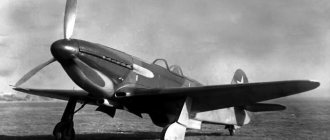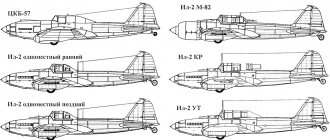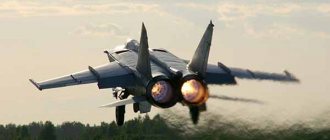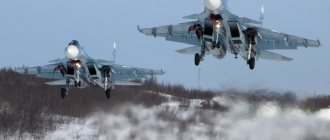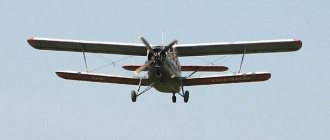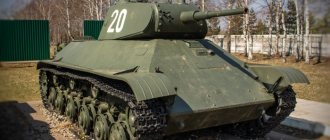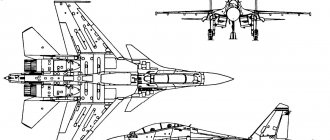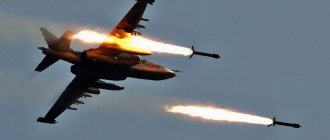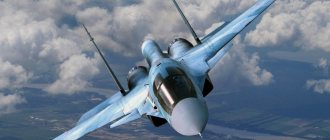The history of this famous aircraft under the designation Li-2 began in the early 1930s. not in our country, but in the USA. In an atmosphere of general confusion, designer D. Douglas, unexpectedly for many, proposed his project for a transport aircraft. The new aircraft aroused increased interest among the customer. Receiving the designation DS-1 (Douglas Commercial-First), it made its first flight on July 1, 1933. The aircraft, which set 19 national and world records, never went into production. Its place on the assembly line was taken by the improved DS-2. The layout of this aircraft was redone over ten times.
Li-2 Dimensions. Engine. Weight. Story. Range of flight. Service ceiling
The history of this famous aircraft under the designation Li-2 began in the early 1930s. not in our country, but in the USA. In an atmosphere of general confusion, designer D. Douglas, unexpectedly for many, proposed his project for a transport aircraft. The new aircraft aroused increased interest among the customer. Receiving the designation DS-1 (Douglas Commercial-First), it made its first flight on July 1, 1933. The aircraft, which set 19 national and world records, never went into production. Its place on the assembly line was taken by the improved DS-2. The layout of this aircraft was redone over ten times.
Sources
- “History of aircraft designs in the USSR” / V.B. Shavrov/
- "Encyclopedia of Military Equipment" /Aerospace Publising/
- “American military aircraft of the Second World War” / ed. David Donald/
- “Americans” in Russia /Kotelnikov V.R., Petrov G.F., Sobolev D.A., Yakubovich N.V./
- Still the same “Dakota” /Wings of the Motherland No. 12 1993, Mikhail Filimonov/
- From DC-3 to Li-2 /Aviation World No. 4 1999, Vladimir Kotelnikov/
- Li-2 - “Air Horse” / Airplanes of the World No. 1,2 2000, Vl. Perov, Oleg Rastrenin/
- “Collection of illustrations on the course of aircraft designs” / M.I. Shulzhenko; MAI 1954/
Airplane Li-2 - video
The designers brought the DS-2 to such perfection that the aircraft itself simply changed all the norms and standards required for American air lines. The plane was quickly put into production, and soon these machines appeared on American airlines. On December 22, 1935, a new aircraft, the DS-3, equipped with more powerful engines and a larger passenger capacity, took to the skies. The efficiency of the new machine turned out to be so high that in two years it literally conquered the whole world. Already in 1938, DC-3s carried 95% of all commercial traffic in the United States. They were operated in 30 countries. The license for their production was acquired by Holland, Japan and the USSR. At the same time, the Dutch company was actually engaged in the sale of these aircraft in Europe.
By agreement, a Soviet delegation from various factories was sent to familiarize itself with its design. In our country, the DS-3, under the designation PS-84 (passenger aircraft of plant No. 84), was produced at plant No. 84 in Khimki. The organization of serial production was entrusted to one of the leading Soviet specialists, V.P. Lisunov. By February 1939, all materials on the technology, as well as all ordered materials and semi-finished products, were received. According to the agreement, it was necessary to build a model copy of the DS-3 aircraft. The company also provided drawings translated into metric measures and in Russian. At plant No. 84, work was carried out to revise the company's drawings, taking into account our accepted tolerances and fits, standards and normals. In addition, modifications were carried out to accommodate our electrical, radio and aeronautical equipment. The first domestic version of the DS-3 aircraft with M-62IR engines was built by November 7, 1938. The first aircraft was built entirely from the American stock of parts. After short and successful factory and government tests, the aircraft was recommended for production. Difficulties in launching production of the PS-84 aircraft were due to the fact that the plant was used as a repair plant and had weak engineering and worker personnel.
The first PS-84s entered Aeroflot service in 1940. American-made DC-3 aircraft flew on international routes. The car was designed to carry 21 passengers. Feedback from airline pilots was very positive. This plane could fly on one engine. Although the plane was not entirely ideal in piloting, it was still quite simple and pleasant. Several variants of this aircraft were created, including ambulance, transport and landing. During the war years, the Soviet Air Force received about 2000 Li-2s, in addition, approximately 700 DS-3s were received under Lend-Lease. With the outbreak of war, plant No. 84 was evacuated to Tashkent. Li-2 aircraft actively participated in the Great Patriotic War.
On September 17, 1942, based on order No. 72, the PS-84 aircraft was renamed Li-2 (Lisunov-2). The appearance of this name looks somewhat unusual. V.P. Lisunov in 1942 was the chief engineer of plant No. 84 and had nothing to do with the design of the PS-84 aircraft. After all, the name was given by the first letters of the designer’s last name. If you follow the logic of events, then the name of the aircraft produced in September 1942 should have been “Se-2” (Senkov-2), at that time the chief designer of plant No. 84.
Modifications of Li-2
PS-84 - The main version of the aircraft was the passenger PS-84 (Li-2P) (Passenger Airplane) with 14-28 seats. Differences from DC-3: reduced wingspan, lower unloaded weight, right side door, and less powerful engines.
Li-2 - Military transport aircraft with additional weapons for defense (name since September 17, 1942).
Li-2D - Parachute drop version of the LI-2 (1942), one 12.7 mm (sometimes 7.62 mm or coaxial) defensive machine gun in the upper fuselage.
Li-2VV - Bomber version (Military Option) Li-2 (1942), 4 × FAB-250 (1 t) or 2 × FAB-500+2xFAB-250 (1.5 t) or with overload - 4 × FAB- 500 (2 t), one defensive machine gun in the upper part of the fuselage and two 7.62 mm defensive machine guns in the rear side parts of the fuselage.
Li-2V - Version of the aircraft for weather observation, for high altitudes (1956), with ASh-62IR engines equipped with TK-19 turbochargers and AV-7NE-161 propellers.
Li-2P - Post-war passenger modification (1945). The cabin accommodated from 15 to 24 passenger seats, had a toilet and a luggage compartment. The main door began to open outward, like the pre-war PS-84.
Li-2T - Post-war transport modification (1945). Also, on the Li-2T base, several staff aircraft were assembled with a meeting table and chairs around it.
Li-3 - Li-2 with original DC-3 engines of the Pratt & Whitney R-1830 type.
Li-2T(sb) - Training bombers based on the Li-2.
Modifications of Li-2
- PS-84K
- transport and landing version. The prototype was developed in June 1939 by order of the Air Force and converted from a production passenger aircraft. The seats were removed, the cabin floor was reinforced, and removable benches for 26 paratroopers were installed along the axis of the fuselage. The cargo was placed in the compartment (the benches were removed) and on an external sling. On the left side there was a wide hatch with a lid that opened upward and a crane. The maximum load was 2400 kg. Not mass-produced. - PS-84I
- sanitary modification. In the ambulance version, stretchers were placed in three tiers in the cabin; in total, the plane carried 18 stretchers, three seated wounded and an orderly. Before the start of serial production, about ten American DC-3s were converted into a sanitary version. No weapons were installed. - Li-2
- new designation for the aircraft since September 1942. Passenger aircraft were no longer built. Wartime aircraft produced from January 1942 onwards underwent significant simplifications. Changes were made gradually, in series. Almost all Li-2s for military use were equipped with 8-mm armored seat backrests, weapons and bomb racks. A primitive sighting sight was installed, which was later replaced by an optical bomb sight. On an external sling, the aircraft could carry 1000 kg of bombs. The crew consisted of six people, two pilots, a navigator, a flight engineer, a radio operator and a gunner. Since 1944, the Li-2 was produced as a multi-purpose military aircraft. In addition to the main (bomber) version, it could be used as a ambulance, landing or transport. In the cargo compartment, expanded due to the front luggage racks, the floor was reinforced and a large cargo hatch was equipped on the left side. It was easy (with a flight mechanic in 10 minutes) to install 18 stretchers in three tiers, three folding seats made it possible to accommodate two lightly wounded people and an orderly. Folding plywood benches along the sides of the fuselage made it possible to place troops. Loads with a total weight of up to 3000 kg were secured to the plywood floor using 14 mooring points. The crew was reduced to four people, two pilots, a radio operator and a flight mechanic. - Li-2NB
- night bomber. Conversion of the basic Li-2. Defensive armament is standard - a UTK-1 turret on top and two ShKAS in the side hatches. The bomb suspension on it remained external, designed for four 250 kg bombs. The crew accommodations have been changed. The radio operator was located in the front trunk behind the right pilot, and the navigator was on the left, near the emergency door, which was now completely glazed, turning it into a large window. The door was convex, and behind it was placed an NKPB-7 (night) bomb sight, looking into the lower section of the door, the glazing of which folded down to improve visibility. Radio equipment has been improved somewhat. Instead of the domestic radio semi-compass RPK-2, the American Bendix MN-26C was installed, and the RSBbis radio station was replaced with RSR-1. - Li-2 (2M-88)
- a small series produced in 1943, differing only in the type of engines with a power of 1100 hp. and weapons, one ShKAS turret machine gun, which was later replaced by UBT. Could carry 25 soldiers. It reached speeds of up to 350 km. - Li-2 "Salon"
- headquarters version. About 10 passenger aircraft were converted. The salon was trimmed with walnut wood, lined with blue velvet and was divided by a partition into two parts: the first contained soft armchairs with tables between them, the second - two sleeping places, a wardrobe and a toilet. Several aircraft were converted into aircraft combat units and differed in cabin layout options.
Performance characteristics of Li-2
— Developer: Boris Pavlovich Lisunov, chief engineer — Start of operation: 1942 — Years of production: 1939—1953 — Units produced: 16,157
Li-2 dimensions
— Length, m: 19.66 — Wing span, m: 28.81 — Tail height, m: 5.16 — Wing area, m²: 91.7
Engine Li-2
— Two M-62IR — Power: 2x1000 l. With.
Speed Li-2
— Maximum speed, km/h: 320 — Cruising speed, km/h: 290
Li-2 flight range
— 2560 km
Service ceiling Li-2
— 7350 m
Weight Li-2
— Takeoff weight, kg: 7700 — Max. take-off weight, kg: 10500
Li-2 armament
- one 12.7 mm (sometimes 7.62 mm or coaxial) defensive machine gun in the upper part of the fuselage (Version LI-2 for dropping paratroopers)
- 4 × FAB-250 (1 t) or 2 × FAB-500+2xFAB-250 (1.5 t) or with overload - 4 × FAB-500 (2 t), one defensive machine gun in the upper part of the fuselage and two 7 .62 mm defensive machine guns in the rear side parts of the fuselage (Li-2VV bomber version)
Combat use of Li-2
Initially, the PS-84 and Li-2 aircraft were used by the Red Army Air Force exclusively as transport aircraft. In April 1942, the 1st Air Transport Division (101st and 102nd regiments) was formed and became part of the ADD. At first, it had only transport Li-2s, but soon units began to equip them with bomber weapons, and Li-2VPs, adapted for use as strike weapons already at the factory, began to arrive from Tashkent. By the middle of the year, the number of strike vehicles reached 180 units. As the Li-2VP was supplied, other units and formations of the ADD were re-equipped with them - primarily those that had previously flown the TB-3. By the beginning of 1944, the Long-Range Aviation already had 5 divisions (10 regiments) flying Li-2VP - two each in the 5th and 7th corps and one in the 6th.
The versatility of the Li-2VP made it possible to assign a wide range of tasks to the units armed with them. Aircraft from the ADD regiments carried out transport operations, flew to the partisans, towed cargo gliders, and ensured landings. The vast majority of flights were carried out at night. When in September 1943 a large airborne operation was planned on the Bukrinsky bridgehead with the involvement of the 1st, 53rd and 62nd ADD divisions armed with Li-2, they decided to carry out the drop at night, since the crews had little experience flying during the day!
As a bomber, the Li-2VP was used for night strikes against targets located at a distance of no more than 200-300 km from the front line. The planes operated on enemy communications, rear airfields, and, less often, on troop concentrations. Carrying out tactical missions, Li-2VP took part in all major battles of 1942-1945. Thus, the crews of the 102nd regiment bombed enemy crossings across the Don during the Battle of Stalingrad, the 1st Guards - attacked railway junctions, ensuring the offensive of the Red Army in the south of Ukraine, the 325th - bombed German heavy artillery positions near Leningrad. The raids were carried out in a column of single aircraft with intervals between aircraft of 2-3 minutes - flights at night in close formation were not practiced.
Units armed with Li-2VP took part in both strategic ADD operations carried out during the Great Patriotic War. In February 1944, 6 massive raids took place on Helsinki, Oulu, Kotka and Turku, and in September - 4 raids on Budapest, Debrecen and Szeged. And on April 7 and 8, 1945, Li-2VP bombed targets during the day for the only time during the entire war - they took part in raids on Koenigsberg.
As of May 10, 1945, the 18th VA (former ADD) had 593 Li-2VP aircraft, and this type of aircraft was the most popular in it. Three divisions of the 18th VA, armed with Li-2VP, were transferred to the Far East, but in the war against Japan they performed exclusively transport missions. In 1946, there were no Li-2s left in the Long-Range Aviation - they were transferred to transport and landing units.
The creation of the Li-2VP was a forced decision, designed to somehow compensate for the losses of long-range bombers suffered in the initial period of the war. The low speed and modest bomb load of the aircraft did not meet the standards of the first half of the 40s. Nevertheless, the Li-2VP turned out to be an almost ideal machine for airborne assault aircraft due to the versatility of the tasks solved by this type of aviation. The introduction of the Li-2VP made it possible to significantly replenish the fleet of attack vehicles, which, if necessary, could be used as transport vehicles. But such a wartime compromise turned out to be unnecessary, and in the post-war period the Li-2s returned to transport tasks more suitable for them.
Production of Li-2 aircraft (1939 - 1953)[1]
| Model | Factory | 1939 | 1940 | 1941 | 1942 | 1943 | 1944 | 1945 | 1946 | 1947 | 1948 | 1949 | 1950 | 1951 | 1952 | 1953 | Total |
| Li-2P | №84 | 6 | 51 | 102 | 10 | 40 | 21 | 39 | 57 | 93 | 60 | 81 | 110 | 44 | 742 | ||
| №124 | 10 | ||||||||||||||||
| №126 | 10 | 8 | |||||||||||||||
| Li-2T | №84 | 135 | 386 | 641 | 617 | 458 | 142 | 312 | 231 | 208 | 233 | 232 | 202 | 86 | 4218 | ||
| №126 | 40 | 148 | 147 |
NOTES
- Statistics on serial production of the Li-2 are given in the publication: History of the Domestic Aviation Industry. Serial aircraft construction, 1910-2010/Under the general editorship. YES. Soboleva. M.: RUSAVIA, 2011. - 432 p.: ill., p. 198 []
